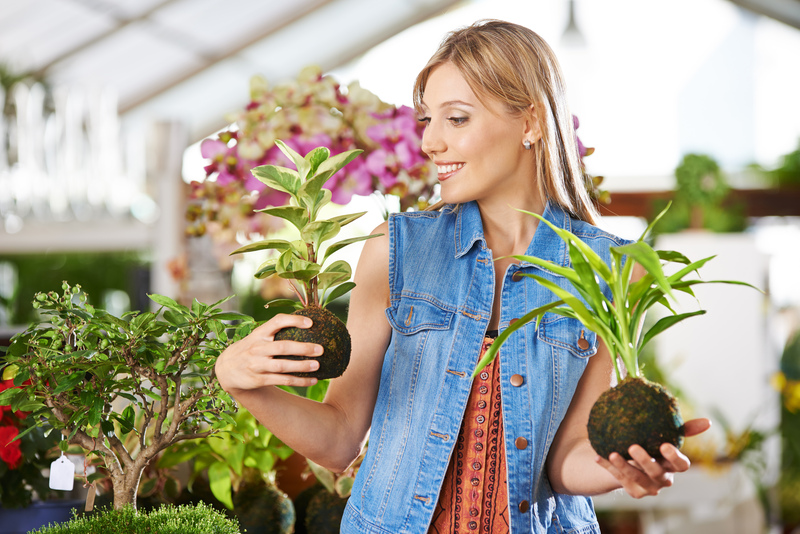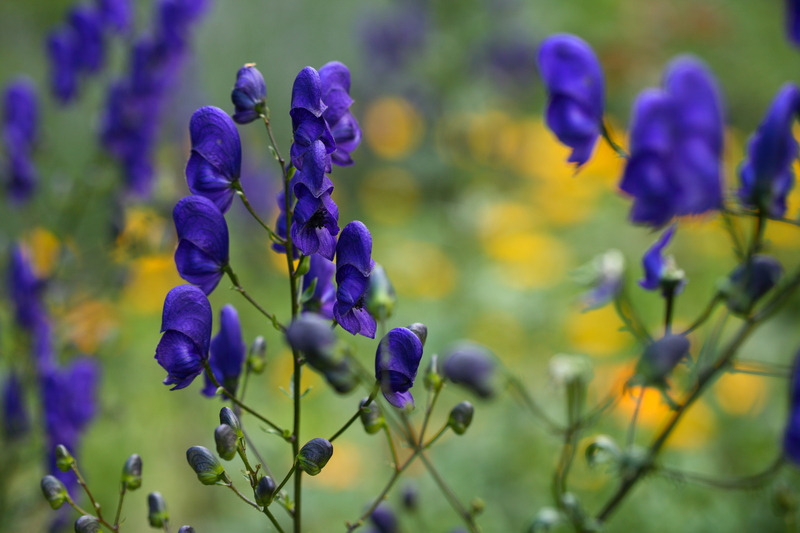Garden Companions: Practical Tips for Gardening with Your Four-Legged Friend
Posted on 25/05/2025
Garden Companions: Practical Tips for Gardening with Your Four-Legged Friend
Gardening is a therapeutic and rewarding pastime, infusing your outdoor space with beauty, bounty, and harmony. But for those of us who share our lives with pets, particularly dogs, gardening presents unique joys and challenges. Your four-legged friend can be an enthusiastic helper or an accidental saboteur, so creating a pet-friendly garden is both an art and a science. In this comprehensive guide, you'll discover practical tips for gardening with dogs, pet-safe landscaping, and how to transform your green retreat into a haven for you and your furry companion.
Table of Contents
- Why Garden With Your Four-Legged Friend?
- Planning a Pet-Friendly Garden
- Safe Plants for Dogs and Cats
- Garden Design & Landscaping Tips for Pets
- Training Your Dog for Garden Etiquette
- Health Benefits of Gardening with Pets
- Fun Garden Activities for Dogs
- Common Gardening Challenges and Solutions
- FAQs: Garden Companions and Pet Safety
- Final Tips & Conclusion
Why Garden With Your Four-Legged Friend?
Bonding with your pet in the garden brings immense joy. For many pet parents, gardening isn't just about plants--it's about creating shared memories. Here's why you should embrace your dog or cat as your gardening companion:
- Physical Activity: Dogs love exploring, and gardening keeps both of you active.
- Enrichment: Outdoor stimulation--sights, scents, and sounds--keeps pets happy and mentally sharp.
- Reducing Loneliness: Working outside with your furry friend reduces feelings of isolation.
- Stress Relief: Gardening is calming; pets lower stress, deepening your sense of well-being.
- Observation and Training: Gardens are ideal spaces to reinforce training and boundaries.
With a few sensible adjustments, you can turn your outdoor space into a thriving oasis that is welcoming for both you and your dog.
Planning a Pet-Friendly Garden
Successful gardening with your four-legged companion begins with smart planning. Here's how to set the stage for a harmonious, safe environment:
Assess Your Garden's Layout and Needs
- Map the Area: Consider your pet's favorite paths, sunning spots, and bathroom zones.
- Boundaries: Evaluate the need for fencing or gates to keep dogs within safe zones.
- Fragile Plants: Note where your delicate flowers or vegetables are located, to shield them from playful paws.
Choose Pet-Safe Mulches and Soil Amendments
- Avoid cocoa mulch, which is toxic to dogs, and choose safe alternatives like straw or shredded pine.
- Stick to organic soil amendments and fertilizers--many chemical types are harmful if ingested.
- Compost carefully: discourage pets from digging or eating decomposing scraps.
Designate Zones
- Dog Pathways: Dogs are creatures of habit. Mark existing routes with paving stones or mulch to minimize plant damage.
- Rest Areas: Place shaded spots with soft grass for relaxing, and water bowls for hydration.
- Pet Potty Zone: Train your dog to use an out-of-the-way area for bathroom needs, using marking posts and different material (like pea gravel).
Safe Plants for Dogs and Cats
Not all plants are safe for our furry gardening companions. Some popular garden flowers and vegetables can be toxic to pets if chewed or ingested. Here's a practical guide to pet-safe garden plants:
Non-Toxic Plants Ideal for Pet-Friendly Gardens
- Sunflowers
- Snapdragons
- Marigolds (Calendula)
- Basil, thyme, parsley
- Ferns (Boston, maidenhair)
- Spider plant, bamboo palm
- Roses (no pesticide sprays)
- Nasturtiums
- Camellias
- Ornamental grasses
Always double-check plant toxicity if you are unsure. The ASPCA provides comprehensive lists of toxic and non-toxic plants.
Beware of These Common Toxic Plants:
- Azaleas & rhododendrons
- Foxglove
- Lilies (especially cats)
- Crocus, daffodil bulbs
- Oleander
- Yew, English ivy
- Sago palm
- Tomato plant leaves & stems
If your pet ever consumes a suspicious plant, contact your vet or poison control right away.
Garden Design & Landscaping Tips for Pets
A well-designed garden anticipates how your dog or cat will move, play, and relax. These tips combine practicality and creativity to promote a thriving garden and happy pets.
Building Dog-Friendly Paths and Borders
- Create walking paths with pavers, flagstones, mulch, or gravel to handle pet traffic and minimize lawn damage.
- Low fencing and trellis barriers can gently discourage wagging tails and curious noses from tramping flower beds.
- Use raised beds for herbs and veggies to keep out paws and claws.
Install Safe Water Features or Mud-Free Play Zones
- Add a shallow pet fountain or dog-friendly splash spot for summer cooling.
- Artificial turf in high-traffic zones prevents worn patches or muddy paws.
- Secure pools and ponds with fencing if your pet is not an adept swimmer.
Enrichment and Exploration Spaces
- Install "sniffing gardens" with aromatic, non-toxic herbs and flowers--dogs adore lavender, rosemary, and mint.
- Add logs or boulders for gentle climbing and shaded hiding places, doubling as natural deco.
Training Your Dog for Garden Etiquette
Basic training makes gardening with your dog smoother and safer for everyone. Here are foundational commands and positive reinforcement strategies for garden harmony:
Key Training Techniques:
- "Leave it" Command: Teaches your dog to avoid plants and off-limits areas.
- Boundary Training: Use visual cues like stones, fencing, or scent markers to show dogs where they can and cannot go.
- Digging Diversions: Build a "dig zone" with loose soil or a sandbox, rewarding your dog for digging only there.
- Supervise early garden time, eventually extending freedom as your pet learns boundaries.
Positive reinforcement--treats, praise, play--encourages good garden manners!
Health Benefits of Gardening with Pets
Did you know? Gardening alongside your dog or cat isn't just beneficial for you, it's a wonderful source of stimulation and well-being for your pet too!
- Mental Enrichment: Outdoor time exposes pets to new scents and sights, reducing boredom and anxiety.
- Physical Exercise: Searching, running, and digging offer healthy outlets for dog energy.
- Sunlight Exposure: (in moderation) helps pets produce Vitamin D and supports immune health.
- *Human-Pet Bonding:* Shared activities deepen affection and trust--your garden becomes a shared sanctuary.
Simply put, a pet-friendly garden nurtures the well-being of your entire household.
Fun Garden Activities for Dogs
Turn your garden into an adventure playground! Here are engaging activities to keep your canine companion entertained while you tend to your plants:
- Fetch zones: A patch of lawn or mulch for ball chases and toy games.
- Treat Scavenger Hunts: Hide healthy pet treats among safe plants for nose-work.
- DIY agility courses with hoops, tunnels, and logs for your dog to jump, weave, or crawl under.
- "Dig pit" or a buried toy box just for your dog's excavation delight!
- Frozen treats in summer; a cool spot to lie down on hot days.
Common Gardening Challenges and Solutions
Pet owners know: Even with your best efforts, the garden can be a site of the occasional mishap. Here's how to resolve the most frequent dilemmas:
1. Digging Up Beds or Lawns
- Solution: Provide a designated digging spot; redirect your dog with toys and treats when caught digging elsewhere.
- Deeply mulch or gravel beds to deter digging.
2. Plant Trampling or Grazing
- Use raised beds, lattice, or row covers to protect vulnerable plantings.
- Choose vigorous, resilient plants near favorite dog paths.
3. Bathroom Habits Harm Plants
- Train your dog to use a "potty patch"; rinse the area with water to dilute urine's effects.
- Consider hardy grasses or groundcovers like clover that are more pet-urine-tolerant.
4. Toxic Plant Ingestion
- Remove hazardous plants; establish boundaries with fencing and training.
- Monitor your pet closely, especially if they tend to chew unfamiliar items.
FAQs: Garden Companions and Pet Safety
Q: Are there organic pest control options safe for pets?
Yes! Use neem oil, insecticidal soaps, diatomaceous earth (food-grade), and hand-picking pests instead of chemical sprays. Always review product safety for pets.
Q: How do I repair a lawn destroyed by pet urine?
Dilute urine spots with water immediately. Reseed or patch with urine-resistant grass blends. Training, diet adjustments, and routine spot cleaning help preserve lawn health.
Q: Can I compost pet waste?
No! Pet waste should not be added to compost intended for food crops. Use dedicated pet waste disposal methods to avoid pathogens.
Q: What if my pet is prone to allergies?
Choose low-pollen plants, keep grass short, rinse your pet's paws after garden time, and consult your veterinarian if you suspect allergies.
Final Tips & Conclusion
Sharing your garden with your four-legged friend doesn't mean sacrificing beauty or bounty. With thoughtful planning, plant selection, and pet training, your outdoor space can flourish with harmony and mutual enjoyment.
- Designate safe zones and establish clear boundaries for digging and play.
- Choose non-toxic plants, organic soil amendments, and pet-safe mulches.
- Combine training, enrichment, and supervision to maintain a peaceful garden environment.
- Garden time with your pet benefits both mind and body--strengthening your bond and nurturing happiness for every family member, furry or otherwise.
Happy gardening! With these practical tips, your garden remains a thriving sanctuary for both you and your beloved companion.



